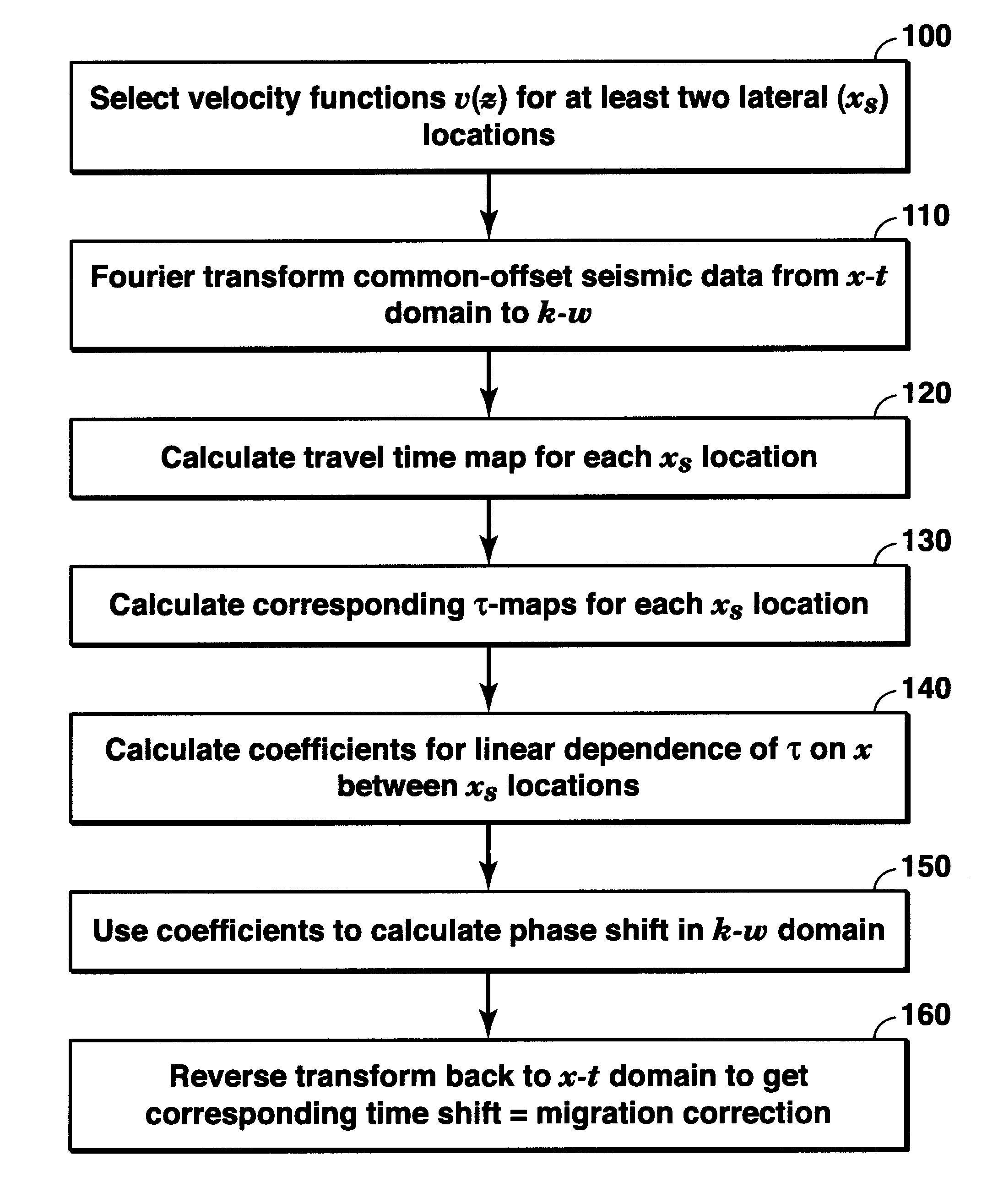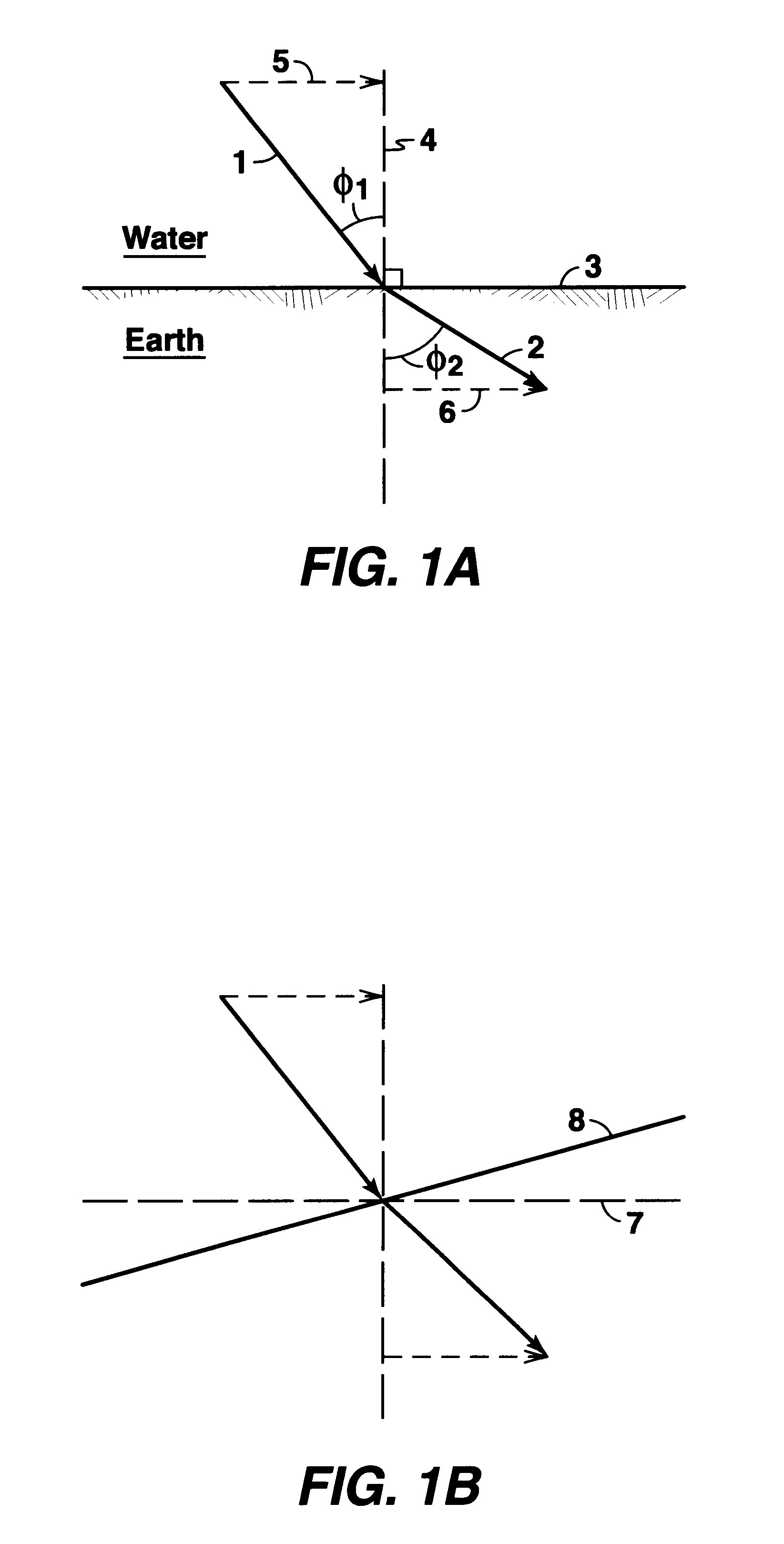Method for compensating mild lateral velocity variations in pre-stack time migration in the frequency-wave number domain
a pre-stack time migration and frequency-wave number technology, applied in the field of seismic prospecting, can solve the problems of unmigration seismic image seismic reflections appearing at incorrect locations, data interpretation stage cannot be successful, and prestack migration is generally much more expensive than poststack migration
- Summary
- Abstract
- Description
- Claims
- Application Information
AI Technical Summary
Benefits of technology
Problems solved by technology
Method used
Image
Examples
examples
Three examples are given below to demonstrate the effectiveness of the present inventive method for correcting errors in both lateral position and vertical time in PSTM in the wave number and frequency domain. Each example applies a standard procedure in wide use for testing the accuracy of seismic processing algorithms.
(1) Impulse Response Test:
The first example is an impulse response test for a velocity model with a dipping water bottom in two-dimensional space. FIG. 2 illustrates this velocity model. The water bottom 21 has a dip of about 3 degrees. The vertical axis is depth in meters and the horizontal axis is distance x in meters. The water depth ranges from 1500 m at the left end to 500 m at the right. The sediment velocity function is assumed to be given by the following linear function of depth :
v()=1600+0.4(−ωb) (13)
where ωb is the water depth in meters. Because the water bottom is slightly dipping (approximately 3 degrees), ωb depends on horizontal position x, and there...
PUM
 Login to View More
Login to View More Abstract
Description
Claims
Application Information
 Login to View More
Login to View More - R&D
- Intellectual Property
- Life Sciences
- Materials
- Tech Scout
- Unparalleled Data Quality
- Higher Quality Content
- 60% Fewer Hallucinations
Browse by: Latest US Patents, China's latest patents, Technical Efficacy Thesaurus, Application Domain, Technology Topic, Popular Technical Reports.
© 2025 PatSnap. All rights reserved.Legal|Privacy policy|Modern Slavery Act Transparency Statement|Sitemap|About US| Contact US: help@patsnap.com



